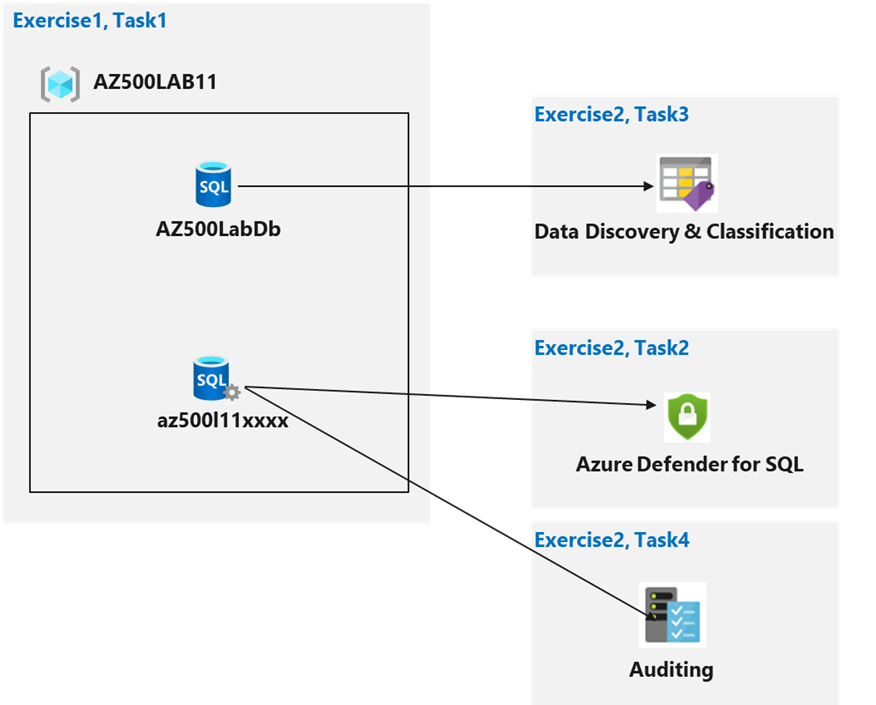
Securing Azure SQL Database
About this guide
Lab Scenario
You have been asked to review security features for Azure SQL database. Specifically, you are interested in:
- Protection against attacks such as SQL injection and data exfiltration.
- Ability to discover and classify database information into categories such as Confidential.
- Ability to audit database server and database queries and log events.
Lab Objective
Exercise 1: Implement SQL Database security features
- Task 1: Deploy an Azure SQL Database
- Task 2: Configure Advanced Data Protection
- Task 3: Configure Data Classification
- Task 4: Configure Auditing
Securing Azure SQL Database Diagram
Job Skills
The Cloudguides in this series help IT professionals gain practical skills related to making Microsoft Azure environments more secure, including how to implement security controls, manage identity and access, protect data and applications, monitor for threats, and maintain a secure posture across various Azure services.
Career Connections
With the increasing demand for cybersecurity expertise, professionals with the skills from this series can pursue job prospects in roles such as Cloud Security Engineer, Security Analyst, Azure Security Consultant, Security Administrator, and Compliance Manager.
As of 2025, average U.S. salaries range from $103,197 to $143,002 for entry-level roles and $120,201 to $203,652 for professionals with 5 years' experience across positions like Cloud Security Engineer, Security Analyst, Azure Security Consultant, Security Administrator, and Compliance Manager. Please note that these figures are approximate, derived from online sources, and can vary based on factors such as location, industry, and company size.






/Key%20Vault%20(Implementing%20Secure%20Data%20by%20setting%20up%20Always%20Encrypted).jpg)
/Create%20a%20Log%20Analytics%20Workspace%2C%20Azure%20Storage%20Account%2C%20and%20Data%20Collection%20Rule%20(DCR).jpg)


